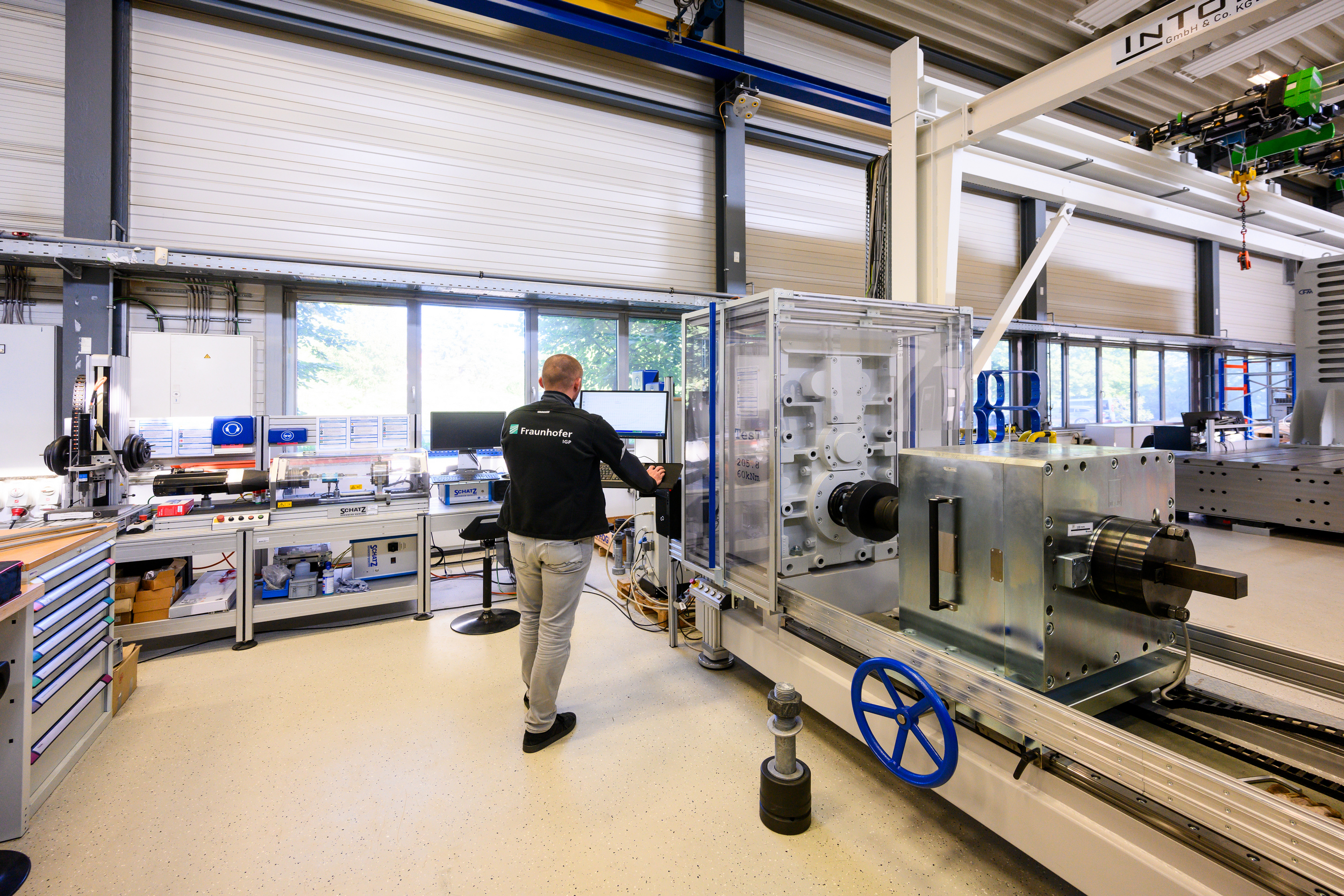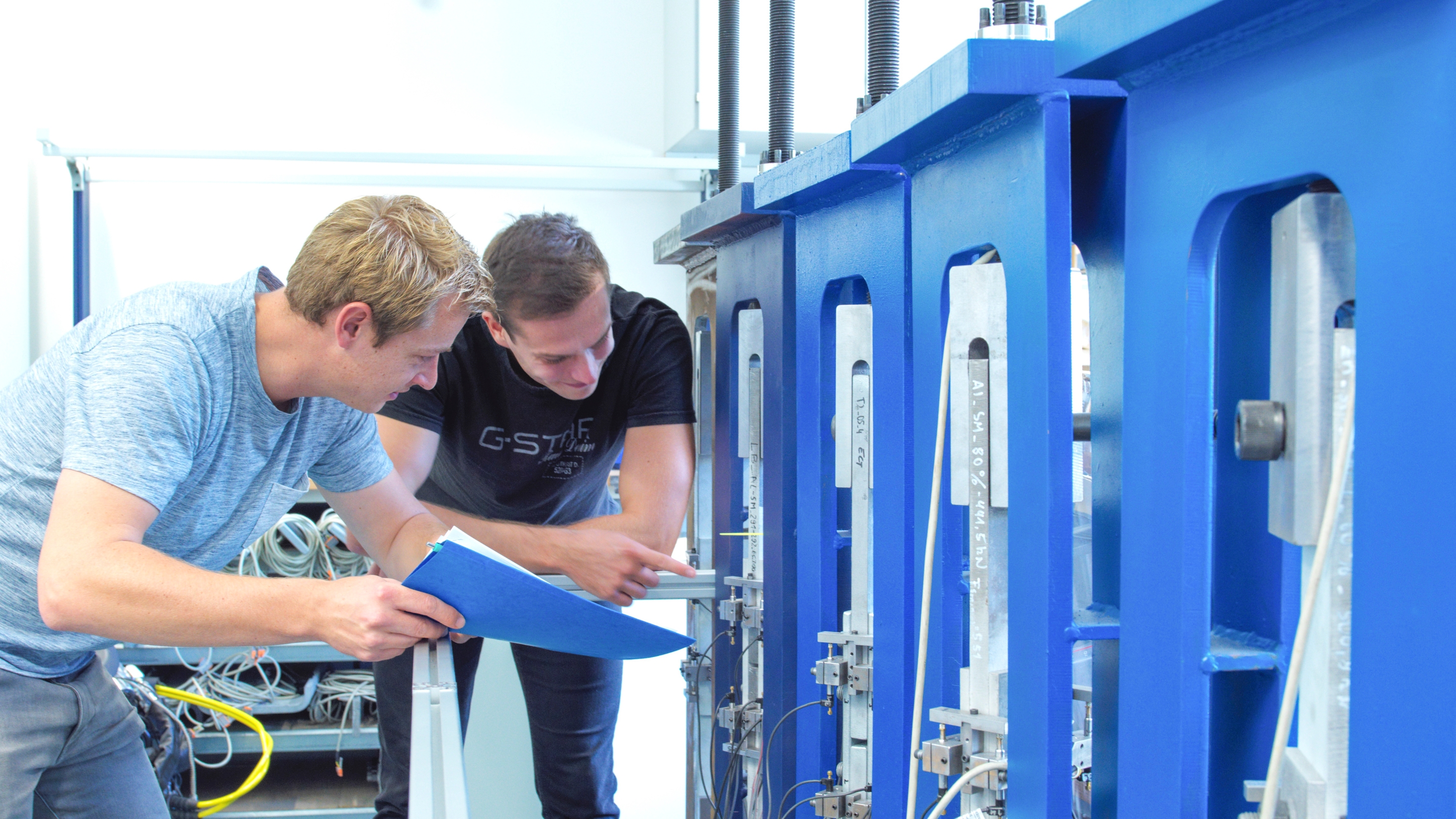Mechanical Joining Technology
Work area
Growing demands on the manufacture of energy and resource efficient products and environmental aspects are leading in many branches to an increasing use of lightweight construction concepts. The associated use of new types of material has given rise to a renaissance in particular of mechanical joining technologies in recent years. In order to give due consideration to this development, the Fraunhofer IGP is developing innovative and cost-effective solutions to the associated problems.

The field of mechanical joining technology involves various research focuses in light alloy and steel construction, in rail vehicle construction and in general motor vehicle and machine engineering. We elaborate branch-specific solutions together with our clients. The right choice and command of the joining methods go a long way to determining the functionality, reliability and safety of a construction right from the start of the product development. At the same time, the optimum joining technology for the particular application helps to save costs and material during production and use. The scope of activities extends from the advice on the choice of the optimum joining technologies through the analysis of the load-bearing strength right up to the derivation of suitable dimensioning rules, depending on the demands of the particular application.
The theoretical considerations are supported by the accredited test laboratory of the Fraunhofer IGP that, with the most modern testing technology, is able to carry out extensive experimental studies into materials, fasteners, joints and coating systems under standardised conditions.
Project overview
Hybrid connections
Re-stressed hybrid connections with lockbolts and high-strength bolts
Further development of the pre-tensioned hybrid connection with lockbolts & high-strength bolts
Slip-resistant bolted connections shall be used wherever the mechanical joints are subjected to impact, vibration and/or load reversal to prevent effectively movement of the connected parts if loaded mainly in shear.
The load-bearing capacity is activated by friction that is a result from the preload of the bolt and the slip factor µ in the slip planes. Commonly, the slip factors that can be achieved for typically anti-corrosion coatings in steel structure are low despite the complex pre-treatment of the faying surfaces. By applying a suitable structural adhesive on the slip planes, significantly higher slip factor and consequently, increases in load capacity, can be achieved. As part of the ongoing research project, the combination of slip-resistant connections and structural adhesives are under deep Investigation.
Metal Structures
Vibration resistance by pressing-in sheet metal sections
For fastening attachments in „thin-walled“ sheet metal structures, functional elements inserted by forming technology offer an extremely economical alternative to welded bushings. In addition to the static strength and the load-bearing capacity under crash loads, their fatigue resistance is always a relevant issue. The research project aims to generate a method of proving fatigue resistance by means of using the local stress theory for sheet metal sections influenced by forming technology. That for example occur as a result of a process sequence during the insertion of functional element. The local stress theory is also compared with the nominal S-N curves of the detail category examined on the formed sheet metal section in S-N-Tests.
Blind Fasteners
New design rules
Expansion of the application limits of blind fasteners for connecting high strength materials
In the field of steel and lightweight metal construction, there has been a trend to the use of high-strength steels in recent years. Over time, these constructions are subjected to predominantly (static) and not predominantly (fatigue) loads.
The use of blind riveting technology in these constructions raises questions from the structural engineer‘s point of view, which are addressed in the current research projects at Fraunhofer IGP. The aim is the development of design rules, which consider the higher material strengths already during planning stage. With these design concepts a more economical design should be possible.
Imperfect GV- connections
Imperfect GV- connections
Influence of manufacturing and assembly-related imperfections on the load-bearing behaviour of bolted non-slip connections in steel construction
Bolted non-slip connections are traditionally used in steel and plant construction whenever slip and deformation in the bolted connections must be minimised. The current test procedure of DIN EN 1090-2, Annex G is limited to the basic load-bearing behaviour under laboratory conditions. The aim of the research project is to record the influence of production and assembly-related imperfections as well as operation-related influences on the load-bearing behaviour of non-slip bolted connections in steel construction in order to be able to reliably guarantee the load-bearing capacity and thus the load-bearing safety of GV connections over their service life on the one hand and to avoid unnecessary repairs and costs on the other.
Lockbold
Interaction Lockbolt
Load-bearing behaviour of combined loaded connections with lockbolt systems
A scientific verification concept is to be determined for the use of lockbolt systems under combined shear and tensile loading. For this purpose, the linear interaction hypothesis, which has been very conservative so far, will be tested with the help of experimental and numerical investigations. The analysis of the load-bearing behaviour as a function of the design of the lockbolt system, the nominal diameter, the material pairing, the strength class and the pretension are in the foreground. Based on the investigations, the determined fracture interactions under combined shear and tensile loading are interpreted and, if necessary, the interaction verification for lockbolt connections is revised to enable a more economical design.
Services
- Consulting on current trends and developments in joining technology (screws, rivets, lockbolts, blind fasteners, functional carriers/elements)
- Preparation of expert opinions and testing concepts for connections in light metal alloy and steel construction (ZiE, abZ/abG, ETA)
- Determination of static friction coefficients according to DIN EN 1090-2 appendix G and TL/TP-KOR steel structures
- Numerical simulation (FEM) with parameterised model building
- Investigation of the fatigue strength of materials and fasteners according to DIN 50100 and DIN 969
- Wöhler tests for the determination of FAT classifications in line with DIN EN 1993-1-9 and FKM guidelines
- Development of measuring algorithms and test methods for non-regulated joining processes
- Derivation of maintenance concepts from preload-force-time behaviour („mechanical maintenance-free“)
- Performance of torque/tension force tests according to DIN EN ISO 16047
- Seminars on the calculation of bolted joints according to DIN EN 1993-1-8 and 9 (Eurocode 3) and VDI 2230 (Part 1)
- Certification/external monitoring of building product manufacturers in the capacity of officially recognised test station in accordance with the German state building regulations.
Equipment
Testing laboratory
- Static universal testing machines (up to 1000 kN)
- Dynamic pulsators (0.1...100 kN; 0.1...100 Hz)
- Torque test bench up to 500 Nm
- Corrosion test chambers/UV irradiation equipment
- Climatic chambers for samples and component tests (90 m³, -50...60 °C)
Production technology - NC workshop for specimen preparation and fixture construction
- Test rig for conventional and ultrasonic-assisted clinching up to max. 50 kN
- Test rig for solid and semi-tubular self-piercing riveting
- Process monitoring for setting processes (force /displacement, torque/angle of rotation)
Analytical laboratory - Incident and transmitted light microscopes
- Spark emission spectrometry
- Helium leakage tester
- Hardness tester
Software used - Catia V5
- LS-Dyna
- ABAQUS (research licence)
- Ansys Workbench V12
 Fraunhofer Institute for Large Structures in Production Engineering IGP
Fraunhofer Institute for Large Structures in Production Engineering IGP